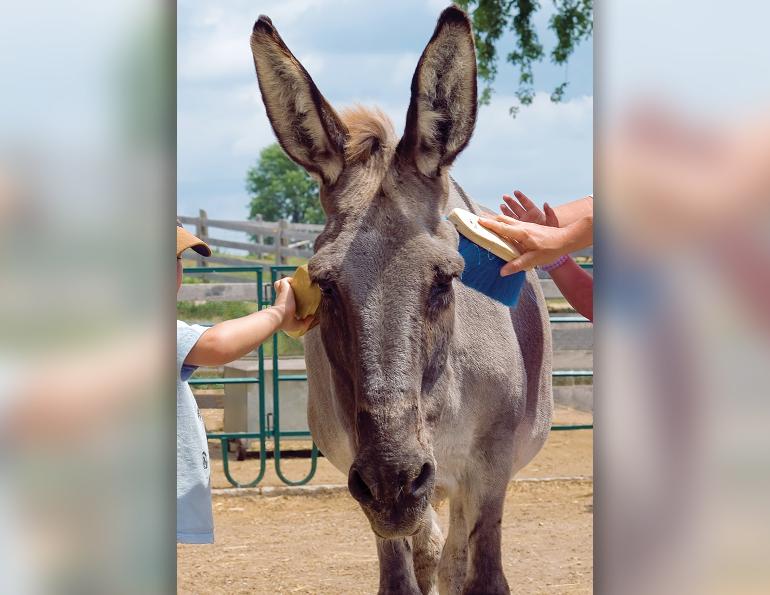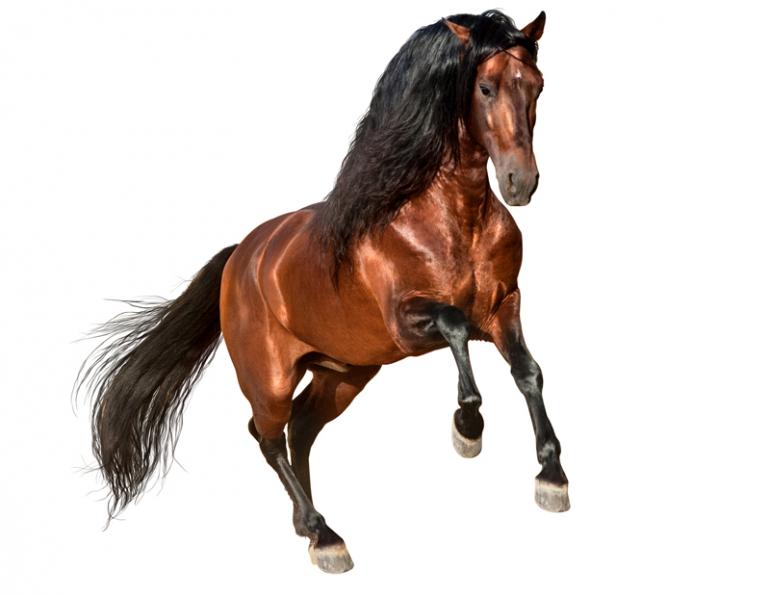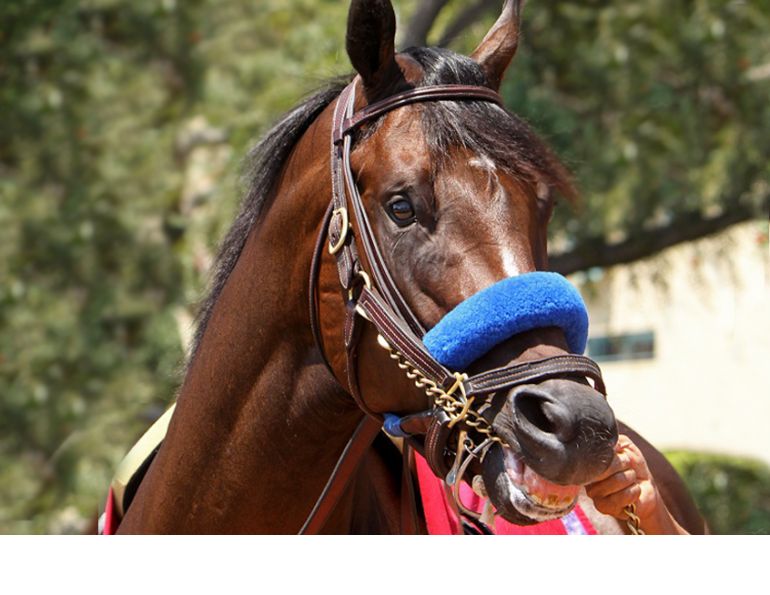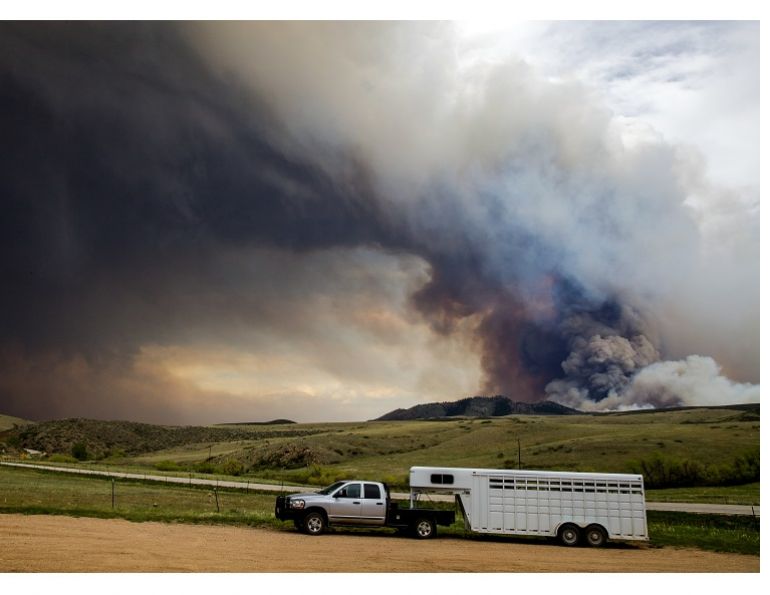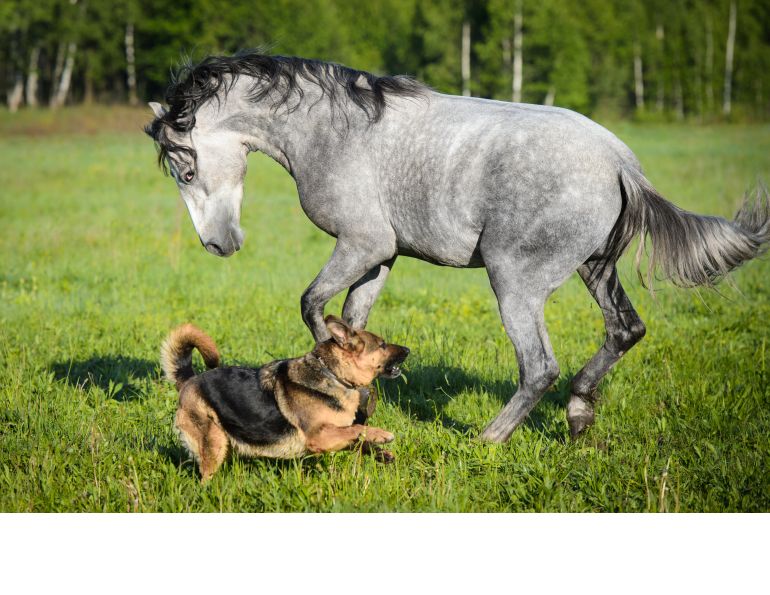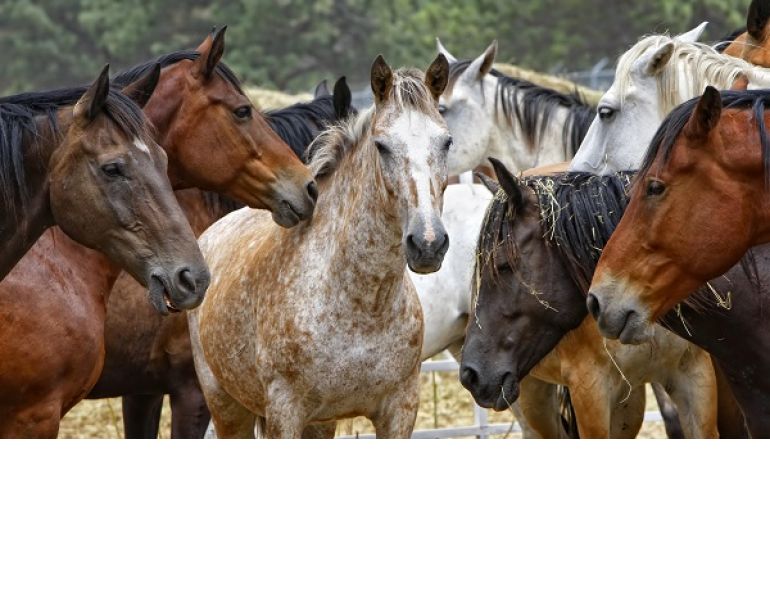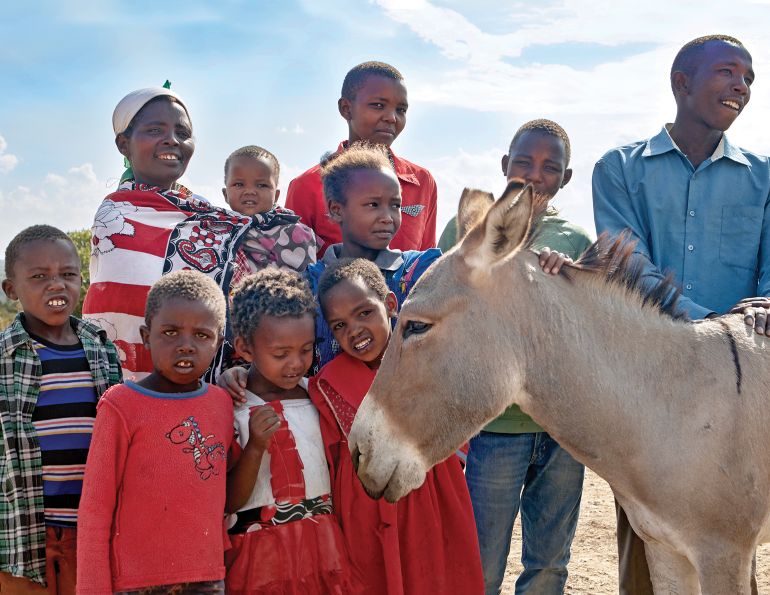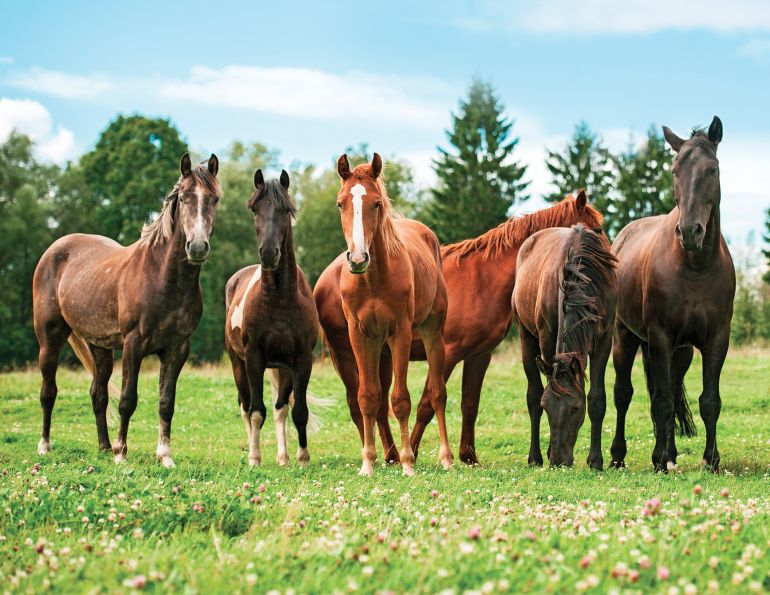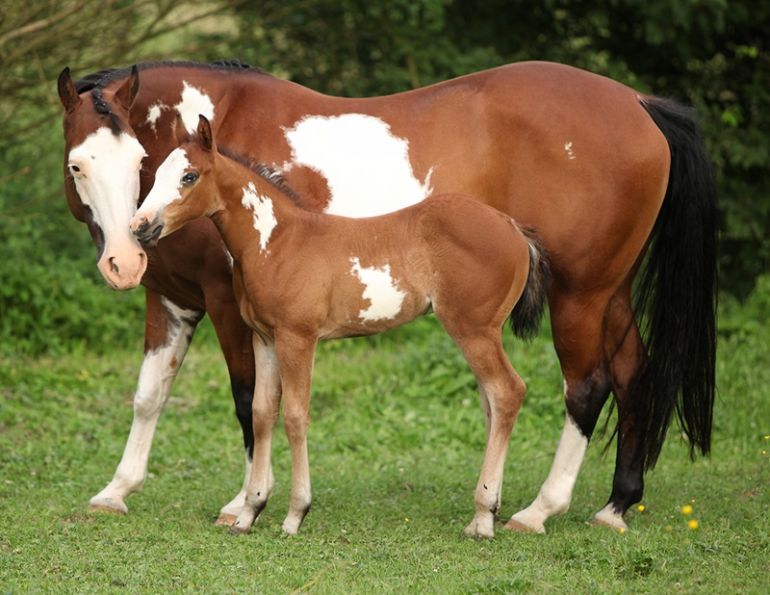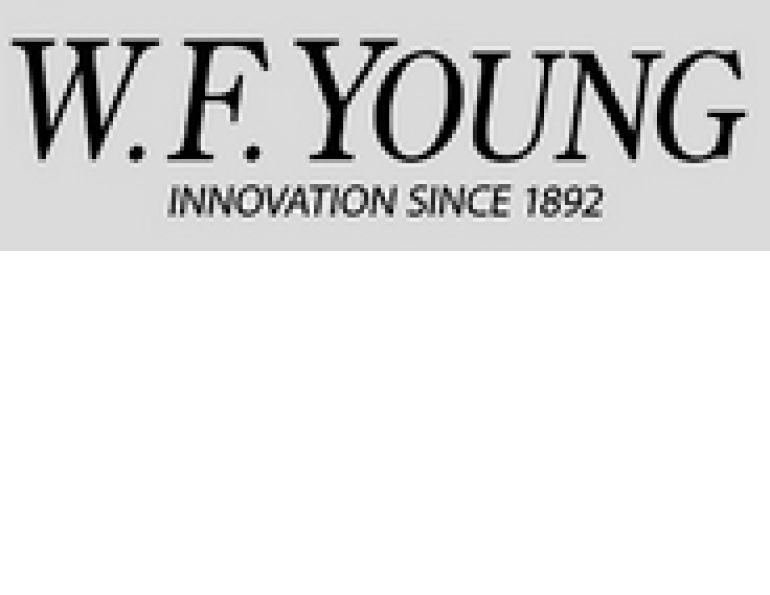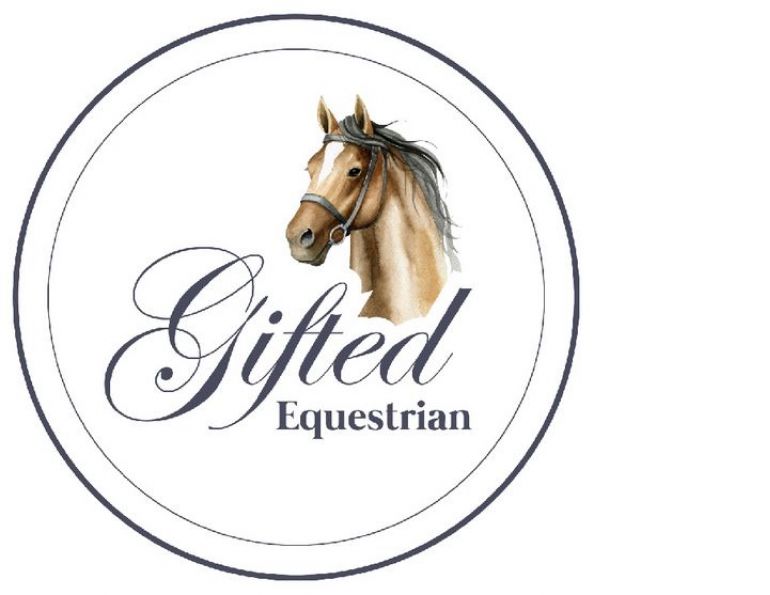Part of the solution for a commitment to equine welfare in Canada
By Shelagh Niblock, PAS
The philosophy of our modern day society is often described as impermanence. Instant gratification through acquisition of “things” is a common theme in life for many and accompanying this is the reality that things which are no longer useful are readily disposed of. Much to the chagrin of animal lovers, this is also a reality for many of the animals we keep in our lives. For example, the breeding and selling of exotic crossbred dogs with names created by combining the breeds of the parents is becoming common, and all too often these offspring end up abandoned or in shelters because they didn’t turn out as expected or desired.
The horse industry in North America has come under scrutiny in recent years for the same problem: indiscriminate breeding practices are producing horses that have no future. In addition to the “backyard breeders” we have many breeders of horses with excellent pedigrees, but the foals produced are intended for a market where they won’t all be successful participants. We accept this in our industry because it is a way to get the superior horse that amazes everyone with his or her performance. However, many find it easy to avoid thinking about the horses bred in the hope that they too would be superior performance horses, but turned out unable to fulfill expectations.
Then there are horses that can no longer do their jobs due to old age or injury, or unsound horses, or horses with behavioural issues. Many can and will find new careers in other disciplines. The off-the-track Thoroughbred (OTTB) is very desirable for stadium jumping, dressage, and three-day eventing because these horses are athletic, excellent value, and lend themselves well to the amateur or professional rider. The schoolmaster no longer sound enough to continue a career as an upper-level performance horse may be functionally sound enough to be completely comfortable as a Pony Club horse for the young aspiring rider.
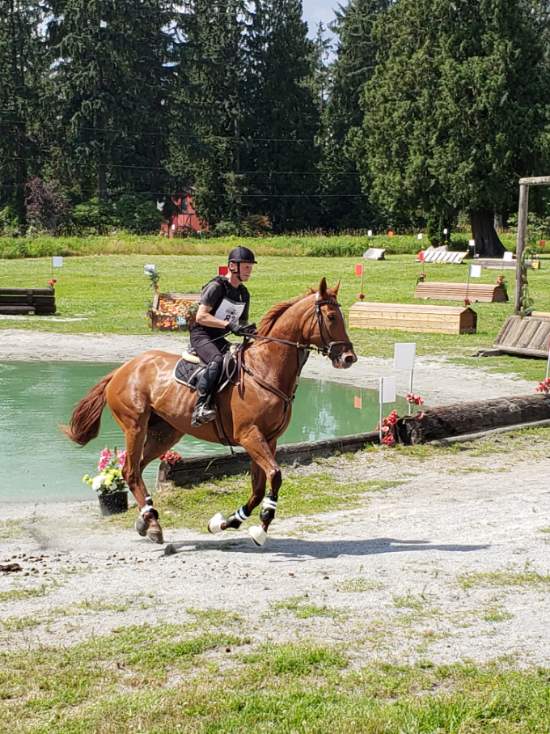
Catch 21, a big 2014 gelding, had eight starts before retiring from the track. He was adopted from New Stride in December 2018 and is learning to be an eventer. Photo: New Stride Thoroughbred Adoption Society
So, what do we do with the unwanted horse? In reality, some of these horses have no viable future and the kindest thing for the owner to do is put them down. Not all horse owners feel the same way about what needs to be done to ensure the unwanted horse does not suffer unduly, and so we see horses ending up at auctions, sometimes in questionable states of health, most likely headed to an abattoir. The slaughter of a horse at an abattoir could be a humane end to life or more humane than starvation or abandonment, but as we all know, this subject is fraught with emotions. There are regulations and practices surrounding the transport and slaughter of horses about which the jury is out as to whether or not they effectively ensure equine welfare.
Suffice it to say that if Canadian horse owners want to feel comfortable about the fate of horses at an abattoir, more dialogue is needed about the transport and handling of horses intended for human consumption overseas.
Related: The "Gen-ethics" of Equine Breeding
Horse Rescues, Sanctuaries, and Shelters
Historically, horses were utilized as beasts of burden for transportation and agriculture. The idea of the unwanted horse was never an issue. Unwanted horses “went to the glue factory” and horse rescues were an unfamiliar concept. Since the end of World War II, the use of horses declined as mechanization took over in agriculture and transportation. The use of horses for sport and pleasure increased and, as the middle class became more affluent, more of us engaged in the use of horses for pleasure. The idea of a horse as a family pet became firmly embedded in our culture, as did the concept of the horse as a sentient being deserving of a good life right up until the end. For many of us, horses ceased to be just livestock. As a concept, horse rescues and shelters began to develop and with the huge explosion of social media they have become even more common.
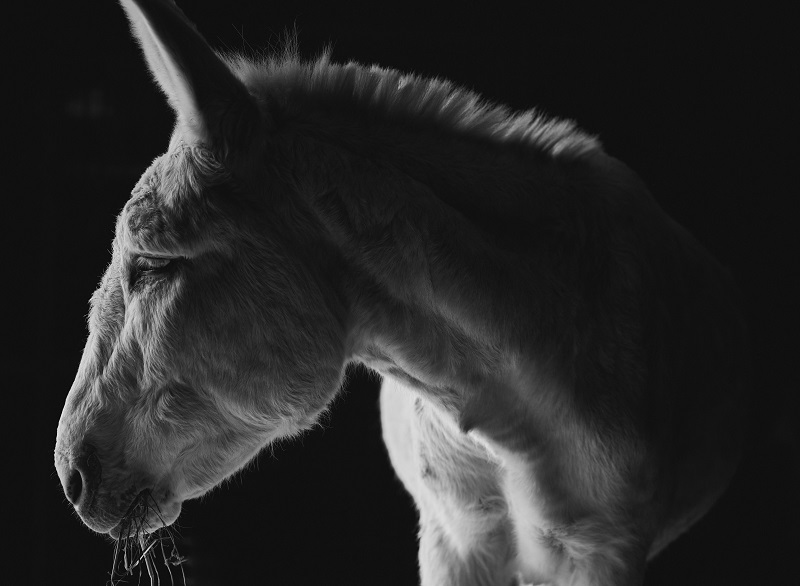
Many donkeys, like Sherlock, come to DSC because they are a failed “livestock guardian,” a job which entails living with a herd of sheep, goats, cattle, etc., for the purpose of protection from predators like coyotes. Though it is a job many people are interested in having donkeys for, the DSC urges people to learn about the behavioural and nutritional misconceptions about donkeys, and that livestock guardianship is not actually a job that many, and even most, donkeys will be suited for. When first met by DSC, Sherlock was chained to a post and covered in cuts and sores, but now he is living his best life with new friends. Photo: The Donkey Sanctuary of Canada
The term “rescue” is actually a misnomer in that it doesn’t really describe the activities of most of the groups who attempt to ensure equine welfare by providing interim or final shelter for horses. A better term to describe what these groups provide would be shelter. In fact, for numerous groups the goal is to “rehab and rehome” horses by accepting horses relinquished to them, assessing them, and then facilitating their path into new careers. There are other facilities which offer “sanctuary or retirement” for horses or other equids. Again, the horse is either relinquished to the facility by the owner, or sometimes “rescued” from auctions or situations where the animal is clearly experiencing significant neglect. There are still other groups offering a combination of the above by accepting surrendered or rescued animals that have fallen on hard times, and attempting to rehab and rehome those that do have a future. All rehab and sanctuary organizations occasionally must make the difficult decision to euthanize a horse that is in pain or distress and cannot be helped.
Are Horse Shelter Facilities Governed by Rules?
The shelter facilities that are in existence may or may not be registered charities and may or may not be certified as to the standards of equine welfare groups. There are competent charitable horse shelter organizations in existence in Canada not registered as non-profits and not accredited by any group or organization. The local horse community generally forms an opinion on their reputation, good or bad, quite quickly. However, certification by an equine welfare organization or registration as a charitable non-profit group with government agencies is a good indication the organization is reputable and will follow minimum equine welfare standards. Organizations run as registered, non-profit charities also offer tax deductible receipts for donations of funds or payment in-kind, where services are provided to the group free or at reduced charge with the understanding that a tax receipt for the value of the service will be issued. Groups registered as charitable non-profits must have a board of directors, have an annual general meeting, file a tax return, have their financial accounts in order, have liability insurance, follow their bylaws, and follow industry-approved protocols for health and safety, biosecurity, and equine welfare. Equine shelter facilities willing to meet all of those checks and balances will generally also seek to be an accountable group regarding their finances, practices, and equine welfare.
Rescue, Rehab and Rehoming in Canada
Canada has a wide variety of equine rescues, rehab, and rehoming facilities, as well as sanctuaries for the permanent placement of horses and other equids. They include facilities for wild horses, racehorses of different breeds, and other equids like donkeys and miniature horses. Many of these are registered charitable organizations and many are also accredited by international equine welfare groups. Probably the best known of these groups are those associated with specific breeds or performance disciplines. The Thoroughbred Racing Industry and the Standardbred Racing industry, for example, have long been leaders in their quest to help facilitate the passage into new careers for horses that can no longer do the work they were bred for.
Thoroughbred Aftercare Alliance
The Thoroughbred Aftercare Alliance (TAA) is an American registered, non-profit which accredits, inspects, and awards grants to approved aftercare organizations to retrain, retire, and rehome Thoroughbreds using industry-wide funding. TAA has a number of industry partners and supporters in the USA-based Thoroughbred racing industry, including breeders, trainers, equine sales groups, tracks, and aftercare providers. The accreditation and inspection of aftercare facilities approved by the TAA is based on standards and protocols established by the American Association of Equine Practitioners (AAEP), in addition to other agencies. Canada has two TAA accredited facilities: New Stride Thoroughbred Adoption Society in BC, and LongRun Thoroughbred Retirement Society in Ontario.
Related: At the Starting Gate of a New Direction
Thoroughbred Adoption Agencies in Canada – New Stride and Longrun
New Stride Thoroughbred Adoption Society is located in the Lower Mainland of British Columbia. First started in 2002 by groups of industry professionals including breeders, trainers, and track personnel, New Stride is a registered, non-profit charity and accredited by TAA. The organization also receives grants awarded by the Thoroughbred Charities of America (TCA). New Stride works with owners and breeders of horses to take Thoroughbreds who can no longer race due to soundness issues or lack of racing success and facilitate their transition into a new career. New Stride horses are housed in a boarding facility from which they are worked and retrained by volunteer staff.

Above: When LongRun was asked to place a horse in Newfoundland, they knew exactly which horse would suit adopter Tara Marshall, and had the sense and temperament to make the long journey to “The Rock.” Tanglefoot, a three-time winner at the track, was lovingly welcomed into Tara’s care and hasn’t looked back since. Tara says “His personality has really come through over the last few months and he is such a smart goof. He is also the real ladies’ man. You won’t see him without a lady or two by his side.” Photo: LongRun Thoroughbred Retirement Society
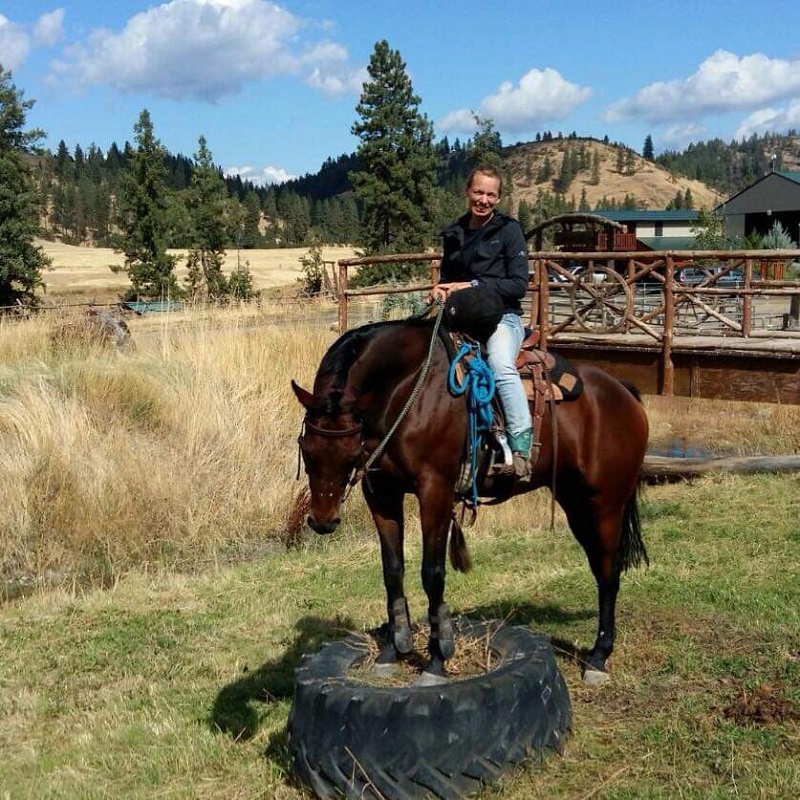
Joyce and Regal Spice, a 2007 mare adopted from New Stride in December 2014. Regal Spice, a sensitive, kind, high-energy mare had 11 starts and some wins. Joyce and “Cleo” participate in cowboy challenge, parades, trail rides, and love liberty work. Photo: New Stride Thoroughbred Adoption Society
Individuals interested in adopting a New Stride horse are invited to fill out an adoption application initiating a process that includes a site inspection of the proposed new home, reference checking of the applicant, and several rides by the applicant on the horse, preferably with the applicant’s coach present. Only on the successful completion of this process does New Stride approve an adoption of one of their horses into a new home. Occasionally a horse becomes a more or less permanent resident of the New Stride facility, but according to Carmen Kramer, Program Coordinator at New Stride, most of their intakes eventually are placed successfully into new homes and careers. Carmen emphasizes how much the racing industry supports the efforts of New Stride to rehome the Thoroughbreds in their care, and she notes that the adopters of horses from New Stride usually stay in touch with the organization and frequently are active in programs like the Thoroughbred Jumper Challenge.

Frank van Veggel of Victoria, BC, with three of the four Thoroughbreds he has adopted from New Stride and retrained for polo. L-R: Authority Taken, a 2012 mare, had 16 starts and was adopted May 2017. Awesome Honey, a 2009 mare, was unraced and was adopted January 2015. Sakura, a 2013 mare, had 19 starts and adopted June 2018. In winter 2020 Frank adopted Bakstar, a 2018 filly who trained but didn't race. Photo: New Stride Thoroughbred Adoption Society
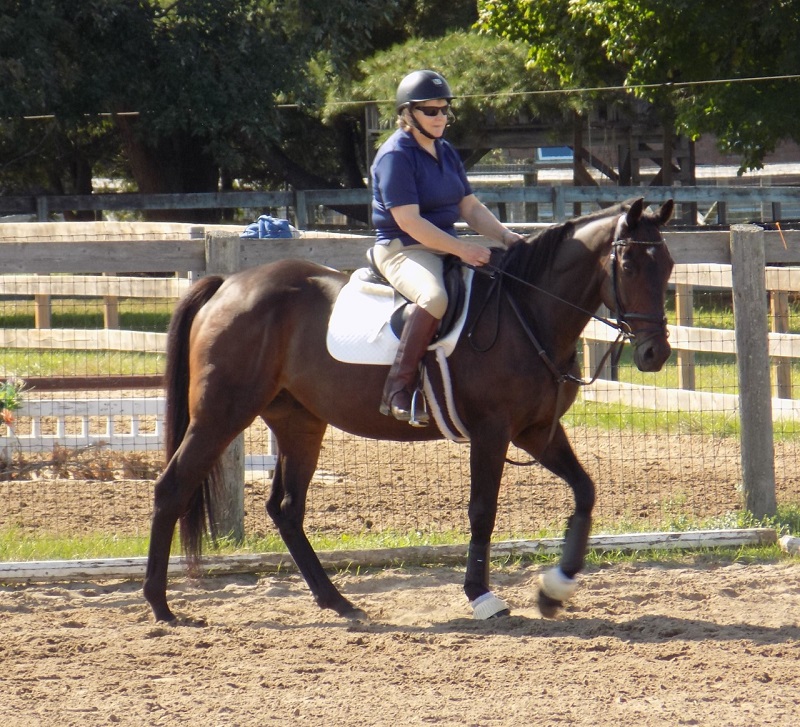
Money Talks was one race short of being an official “war horse” with 49 starts and $195,248 under his belt prior to his retirement to LongRun at the end of Woodbine’s 2019 racing season. This kind-hearted guy found his forever home with adopter Jillian Wainwright, who adores the “sunshine of her life.” With his stunning good looks and wonderful personality, he is a spectacular dressage horse. Photo: LongRun Thoroughbred Retirement Society
LongRun Thoroughbred Retirement Society is another racing industry-supported, registered non-profit organization, facilitating the passage of OTTBs into new careers. Situated on a large farm capable of supporting up to 50 horses in Hillsburgh Ontario, LongRun follows similar protocols to New Stride in their goal of rehoming Thoroughbreds, is also accredited by the TAA, and receives grants from TCA as well. The LongRun head office is at Woodbine Racetrack in Toronto and, like New Stride in Western Canada, LongRun enjoys the full support of the racing and equine industry. Both New Stride and LongRun are run by boards of directors, all of whom are volunteers, as are many of their staff.
Standardbred Rehoming Agency – Greener Pastures
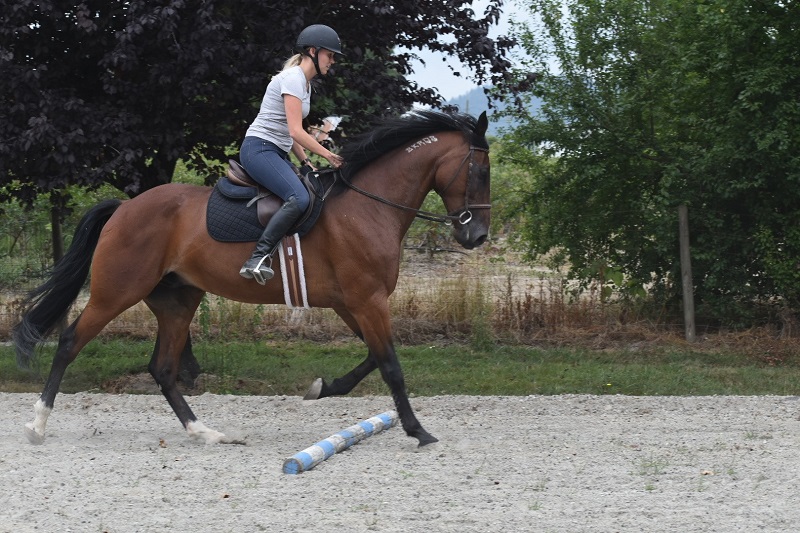
Colbaltslaststand “Colty” is a nine-year-old gelding with 42 lifetime starts and a career earnings of $14,692. Retired from racing in April 2019, he was brought up-to-date on vet treatments and started under saddle by Greener Pastures. Colty was adopted and returned twice due to no fault of his own or his adopters, and finally adopted into an amazing home in October 2021. Photo: Greener Pastures
Greener Pastures — BC Standardbred Horse Adoption Society is a BC-based, registered non-profit shelter for Standardbred horses no longer able to participate in harness racing. Founded in 2003 by a group of Standardbred breeders, trainers, and harness racing enthusiasts, Greener Pastures provides a shelter for the Standardbred needing a new career. The organization is run entirely by volunteers with the exception of qualified trainers who are paid for their expertise in retraining Standardbred horses in transition from the racetrack into other careers. Like many equine shelters in Canada, Greener Pastures is entirely funded by donations, adoption fees, and some grants. Horses coming into their care have been donated by their owners who want to see them successfully rehomed. Currently, there is a waiting list of horses to be accepted into Greener Pastures.
Related: The Horse Welfare Alliance of Canada

Fiverr AM, a six-year-old mare, raced 64 times and made career earnings of $30,000. Retired from racing in October 2020, she was adopted in November of 2020 to a loving family who gave her a few months off to bond and settle in her new home, and has since been started under saddle. Photo: Greener Pastures
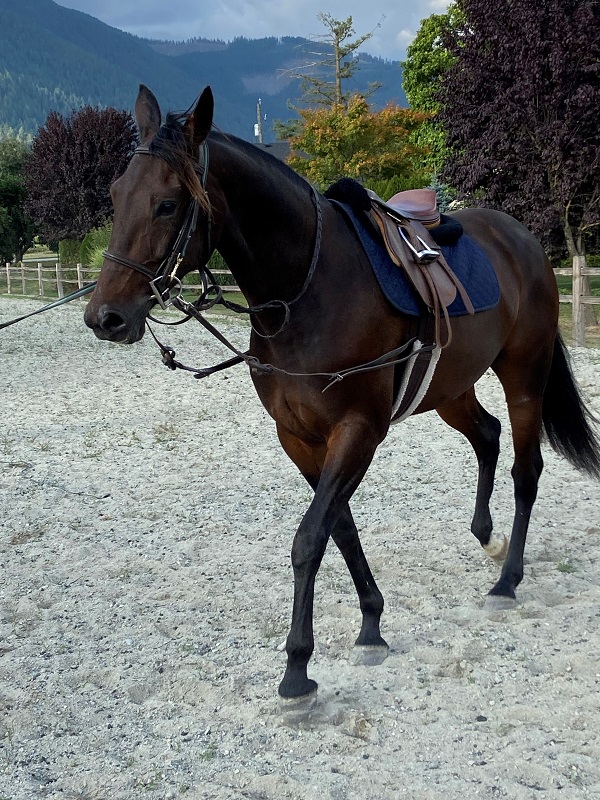
The six-year-old mare, Ginger Beer, raced 83 times and stood in the winner’s circle 15 times earning $90,000. She has been lightly started under saddle and was adopted in October 2021. Photo: Greener Pastures
Individuals interested in adopting a Standardbred are invited to fill out an adoption application and once submitted, the evaluation process begins. Adoptions are approved pending reference checks and site inspections but they are not finalized for a year, allowing both the shelter and the adopter time to determine whether the new job is the best fit for the horse. Having a conversation with Christie Lewis, Vice President of Greener Pastures, was reminiscent of conversations with volunteers associated with other horse shelters in Canada: there is always a huge commitment to and passion for the top priority of offering these horses another option in life.
Wild Horses of Alberta Society
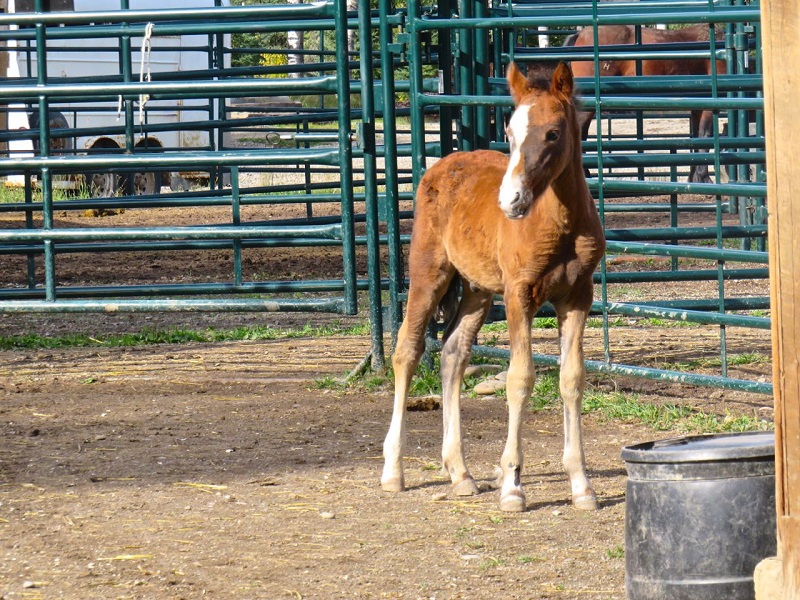
The orphan foal, Garside, was rescued because his mare died suddenly in the wild and he was left by the herd. “He was running around and kept going back to his dead mare,” says Bob Henderson of WHOAS. “We were able to walk up and pick him up. He was taken back to our rescue facility where he was lovingly taken care of by our volunteers. It did not take him long to love his regular feeding of milk replacer.” Garside has been adopted by Amber Marshall of the CBC series, Heartland. Photo: WHOAS
The Wild Horses of Alberta Society (WHOAS) is a multi-faceted, registered, non-profit organization with the mandate of protecting wild horses in their natural habitat; maintaining a handling and rehab facility to provide veterinary care for wild horses when needed; providing a wild horse adoption program; providing information and data for research on wild horses; providing education for the public on wild horses; and finally, protecting the environment by working with the government to establish reasonable and achievable wild horse population management solutions. WHOAS was first established as a registered non-profit society in 2002, as a response to the culling of wild horses by government organizations in an effort to exercise population control. Degradation of soil and water due to overpopulation of wild horses is an increasing problem on both sides of the Canada/US border. Culling wild horses as a means of controlling populations is regarded as abhorrent by many Canadians, and so research into better ways to manage populations is ongoing. WHOAS is actively engaged in supporting the welfare of these equines not only by providing shelter but by pursuing research to control the population so they can live as wild horses without degrading the environment. The WHOAS website is packed full of information on the work they are doing.
Related: Good Deeds: Feeding Wild Horses

A small band of wild horses in early August enjoying the lush green grass of summer in a little clearing. Photo: WHOAS
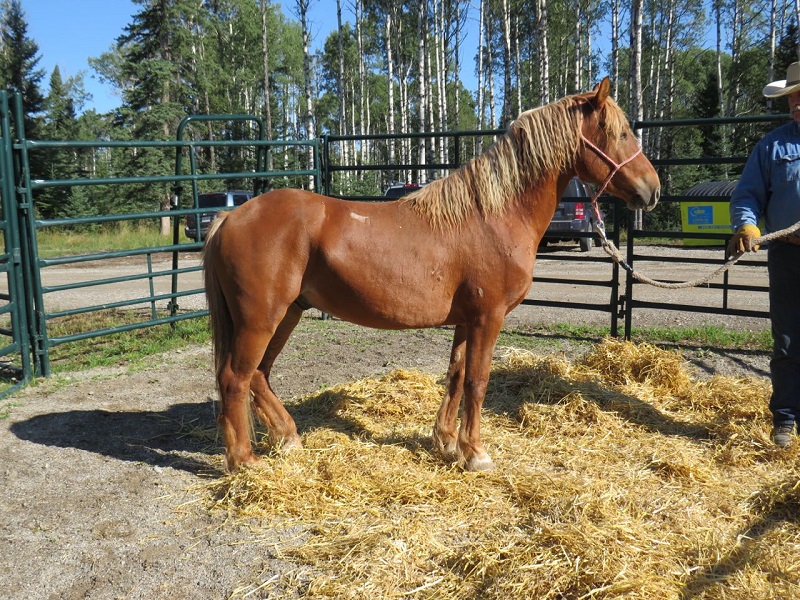
One of the Alberta wildies, Galihad, was rescued and worked with by WHOAS volunteers. This photo was taken just before he went to his new forever home. Photo: WHOAS
The Donkey Sanctuary of Canada
An equine sanctuary is a facility that takes in vulnerable equines and provides them with a final home where they can live out the rest of their days. The Donkey Sanctuary of Canada (DSC) is one such organization providing a home to donkeys and mules of all ages and sizes. First incorporated in 1992 by Sandra Pady, a lifelong animal lover, the DSC is a registered non-profit organization. Pady started small, and as her family of residents grew she modelled her sanctuary on the Donkey Sanctuary of Great Britain.
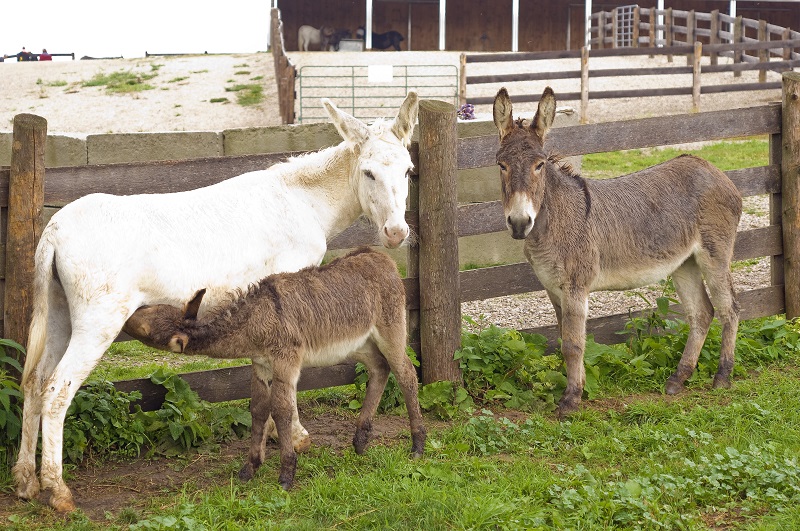
Above/Below: At just six years old, Diamond arrived with her four children (including a foal at side and one on the way) in 2013 from an SPCA seizure. Like many cases the DSC deals with, the “Jem Family” were the result of poor backyard breeding and arrived with no care and handling. They required intensive physical and mental rehabilitation due to neglect, including hoof trims for their extremely overgrown, curling hooves. Photos: The Donkey Sanctuary of Canada
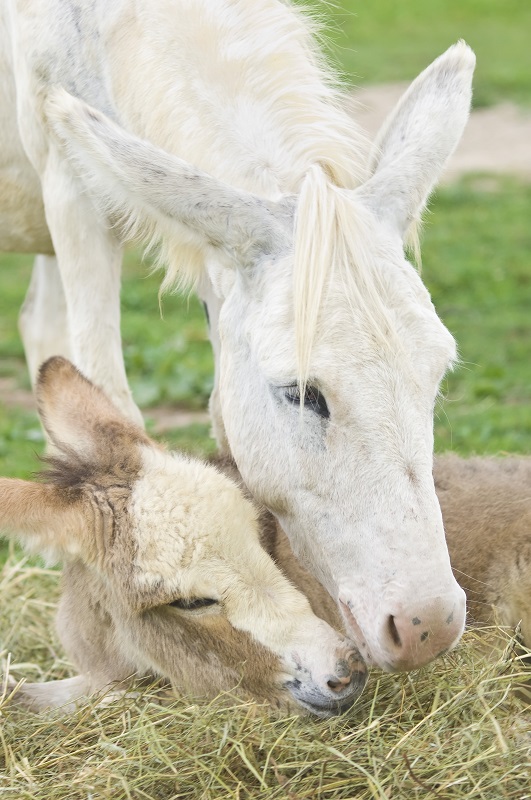
Located on a 200-acre farm in Puslinch, Ontario, the DSC has given a lifelong home to approximately 350 donkeys and mules to date. The DSC also utilizes a network of foster homes for donkeys, greatly increasing the sanctuary’s capacity to provide care for senior or vulnerable animals.
Donkeys who live at the sanctuary might be animals seized by the SPCA from negligent homes, but frequently the residents of the DSC were relinquished by their owners for a variety of reasons. The Donkey Sanctuary of Canada is an accredited sanctuary with the Global Federation of Animal Sanctuaries. For more information about this sanctuary, their website is an excellent source of information about caring for donkeys and about the work the sanctuary does to provide care for this segment of our Canadian equine population.
Related: How to Safely Refeed a Malnourished Horse
Are Shelters and Sanctuaries a Solution?
Equine shelters in Canada, including the accredited, registered non-profit facilities, as well as the facilities owned and operated by individuals who just want to help, provide a partial solution to an issue that has increasingly haunted Canadian horse owners: What are we as an industry going to do about the unwanted horse? But what can Canadians as individual horse owners do to be proactive with respect to the unwanted horse? The groups mentioned in this article and others like them, supported by equine industry, are a very important part of the effort to address the issue of equine welfare in Canada, but shelters will never be able to accommodate all of the unwanted horses. Every shelter is forced to turn away horses that need a safe place to go. The subject of the unwanted horse still requires serious discussion by all stakeholders including horse owners, breeders, veterinarians, equine scientists, and researchers, as well as the equine sport discipline associations and Equestrian Canada.
How Can We Support Horse Shelters?
The organizations listed in this article represent only a small fraction of the excellent facilities in Canada. Most horse owners know of at least two or three equine shelters located in their area. Other agencies that can direct you to equine shelters are the Society for the Prevention of Cruelty to Animals (SPCA), equestrian provincial and territorial sports organizations, and groups like the Horse Welfare Alliance of Canada. All equine shelters appreciate and rely enormously on community support. For many, financial donations from the community are their sole means of support. Support for equine shelters may be provided as monetary donations, donations of in-kind services, and/or donations of time through volunteering, which can mean being a hands-on helper at a shelter, or helping with social media and website management, email management, fundraising, or community events. When considering a donation of funds to a shelter, check for accreditation and registration as a non-profit charity, but if the shelter has neither of those, ask for references from a veterinarian, farrier, and/or the local equine community.
Equine shelters, like those mentioned in this article, are at least part of the solution, and they should enjoy the support of everyone in the horse community. But every stakeholder in the horse industry must take ownership of the issue of the unwanted horse if a complete and lasting resolution is ever to be found.
For more information on equine welfare and the shelters and sanctuaries mentioned in this article, visit these websites:
- Thoroughbred Aftercare Alliance
- New Stride Thoroughbred Adoption Society
- LongRun Thoroughbred Retirement Society
- Greener Pastures — BC Standardbred Horse Adoption Society
- Wild Horses of Alberta Society
- www.thedonkeysanctuary.ca
- Horse Welfare Alliance of Canada
Related: Second Careers for Racehorses
Main Photo: While most of the donkeys at the Donkey Sanctuary of Canada reside on the main farm in Puslinch, ON, approximately 60 donkeys, like Jayne here, reside on foster farms across Canada. The DSC Foster Farm Program is hugely important to their ability to maintain free space at the main farm for new emergent cases. Jayne lived without care for almost 20 years before coming to the sanctuary malnourished, with matted fur covered in burrs, and hooves growing up into her legs. After her rehabilitation, our Foster Farm Program has allowed her to live a life with a family again. Photo: The Donkey Sanctuary of Canada



